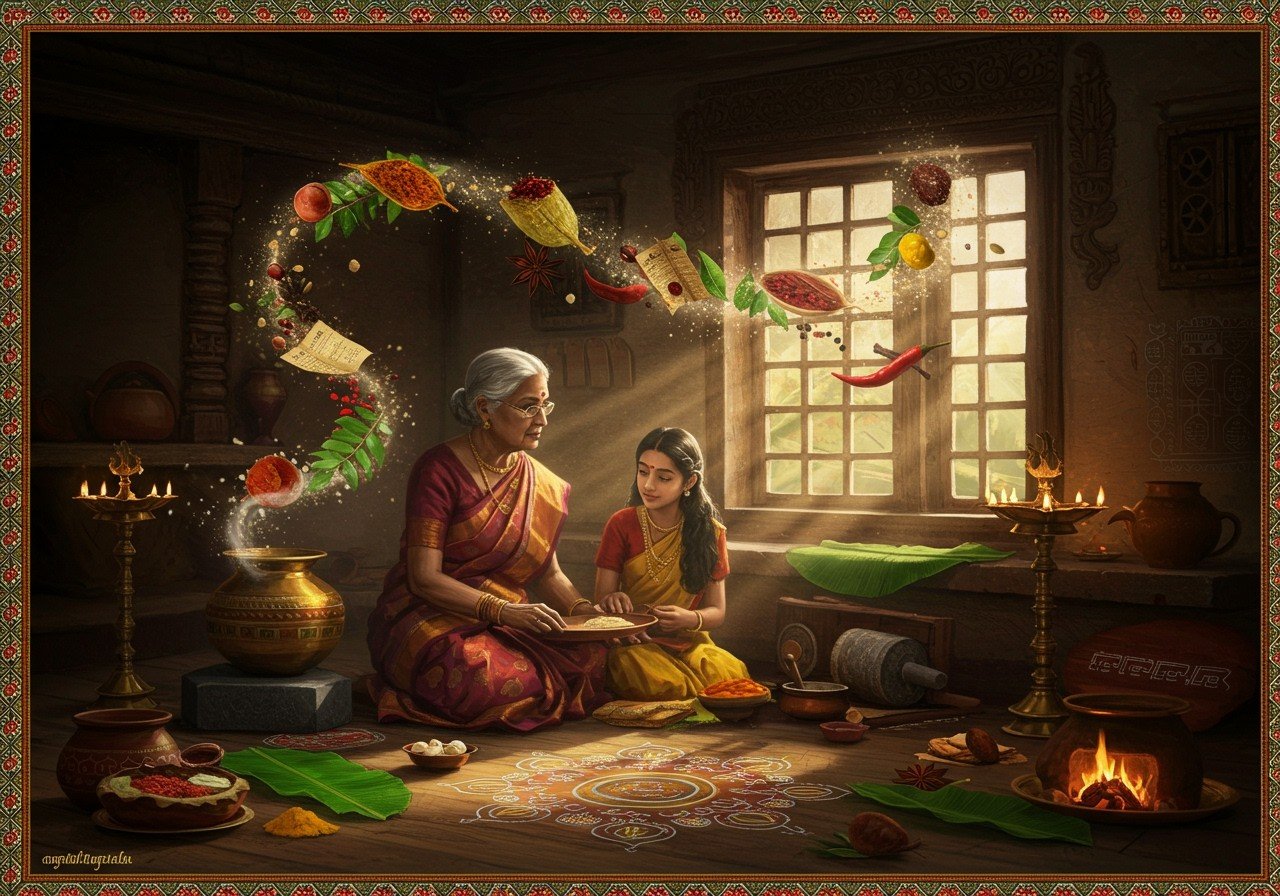Iraiyanar Akapporul: A Glimpse into Ancient Tamil Culture and Cuisine

Iraiyanar Akapporul, a timeless masterpiece of Tamil literature, offers a fascinating window into the world of ancient Tamil society. This profound work, attributed to the divine sage Iraiyanar, plays a pivotal role in shaping the cultural and culinary tapestry of Tamil Nadu. By delving into its verses, we uncover how literature intertwines with daily life and traditions, especially the rich culinary heritage of the Tamil people.
Exploring the Significance of Iraiyanar Akapporul
Iraiyanar Akapporul holds a revered position within the Tamil literary canon. Originating from the divine sage Iraiyanar, it serves as a guide to the nuances of love poetry. As part of the esteemed Ettuthokai anthologies, this text safeguards the cultural values of the Tamil people. Its structure and content embody the essence of Tamil heritage, offering valuable insights into the historical context of its creation.
A Culinary Journey Through Ancient Tamil Nadu
In the heart of Tamil Nadu, food transcends mere sustenance; it embodies a celebration of life, a tribute to heritage, and a symbol of community. Ancient Tamil culinary traditions, deeply rooted in texts like Iraiyanar Akapporul, unveil a society where every meal was a vibrant fusion of social and cultural significance. Let’s embark on a culinary journey through time:
The Essence of Tamil Cuisine: Staple Foods and Ingredients
-
Rice: The Heart of the Meal: Rice reigned supreme as the staple food, gracing Tamil tables in countless forms. From the refreshing tang of curd rice to the zesty zest of lemon rice and the piquant punch of tamarind rice, each variation celebrated the versatility of this beloved grain. Poojn.in offers a fine selection of Pancha Sasya (Five Grains), perfect for your traditional rice preparations.
-
Millets: Nourishment for the People: Millets such as varagu, thinai, and samai held a special place in the diets of the common people, providing sustenance and nourishment. These grains, rich in nutrients and flavor, were integral to the everyday meals of ancient Tamils.
-
Lentils and Pulses: The Building Blocks of Flavor: Lentils, particularly toor dal and moong dal, formed the foundation of iconic dishes like sambar and rasam. These humble pulses, brimming with protein and flavor, were essential to the Tamil culinary repertoire. Check out our range of premium lentils at Poojn.in.
-
Spices: The Soul of Tamil Cooking: Spices infused Tamil cuisine with its distinctive character. Long before the fiery chili arrived, black pepper was the king of spices. Turmeric, cumin, coriander, ginger, cinnamon, cardamom, asafoetida, and curry leaves each contributed their unique aroma and flavor, creating a symphony of tastes. Poojn.in offers high-quality White Mustard Seeds and other spices to elevate your Tamil dishes.
-
Sweeteners: A Touch of Natural Sweetness: Sugarcane syrup and honey provided a touch of natural sweetness to Tamil delicacies. Jaggery, a wholesome and unrefined sweetener, also played a prominent role in traditional sweets, adding a unique depth of flavor. For pure and natural sweeteners, explore our collection at Poojn.in.
The Art of Tamil Cooking: Practices and Techniques
-
Traditional Methods: A Celebration of Simplicity: Ancient Tamil cooking embraced techniques like sautéing, steaming, and roasting, preserving the natural flavors of ingredients. Deep-frying, a later addition, didn’t become prevalent until around the 15th century.
-
Preservation Techniques: A Tribute to Resourcefulness: Sun-drying was a common method for preserving food, resulting in delicacies like fryums (vatral), sun-dried fish (karuvaadu), and sun-dried meat (uppukandam). Pickles also played a crucial role in preserving vegetables and fruits, adding a burst of flavor to meals.
-
Traditional Utensils: A Connection to the Past: Stone grinders and clay pots were the workhorses of Tamil kitchens, grounding the cooking process in tradition and imbuing dishes with an earthy essence. These simple yet effective tools were instrumental in creating the authentic flavors of Tamil cuisine. Explore our range of holy utensils at Poojn.in, ideal for traditional cooking practices.
Regional Variations: A Tapestry of Flavors
-
Diverse Landscapes, Unique Cuisines: The five traditional landscapes of Tamil Nadu—Kurinji (mountains), Mullai (forests), Marutham (agricultural fields), Neithal (coastal region), and Palai (desert)—each nurtured distinct culinary traditions. Local ingredients and cooking methods shaped the unique flavors of each region.
-
Kongu Nadu Cuisine: A Celebration of Rice: Kongu Nadu cuisine, with its emphasis on rice-based dishes like idli, paniyaram, and appams, showcased the region’s agricultural abundance. These fluffy, fermented delicacies exemplify the creativity and ingenuity of Tamil cooking.
Dietary Habits: A Blend of Traditions
-
Non-Vegetarianism: A Historical Practice: Historically, meat played a significant role in Tamil cuisine, particularly in coastal areas where fish was abundant. Rams, deer, hare, fowl, porcupines, pigs, and boars featured in various dishes.
-
Vegetarianism: A Cultural Cornerstone: Vegetarianism also held a strong cultural presence, with an array of plant-based dishes showcasing the region’s rich biodiversity. Lentils, vegetables, and fruits were transformed into flavorful and nutritious meals.
-
Traditional Beverages: A Refreshing Touch: Toddy, extracted from palm and coconut trees, was a popular beverage. Milk, sourced from cows, goats, and even deer, also featured in the Tamil diet.
FAQs: Delving Deeper into Iraiyanar Akapporul
How is Iraiyanar Akapporul pronounced? It’s pronounced “Ee-rai-ya-nar A-kap-po-rul.”
What exactly is Iraiyanar Akapporul? It’s a classical Tamil text that delves into the rules of love poetry and its composition.
Why is it important in Tamil culture? It provides insights into ancient Tamil poetry, language, and cultural practices.
How does it influence culinary traditions? It reflects cultural values emphasizing hospitality and sharing traditional Tamil cuisine during gatherings. You can find many traditional ingredients and puja items for such occasions on Poojn.in.


